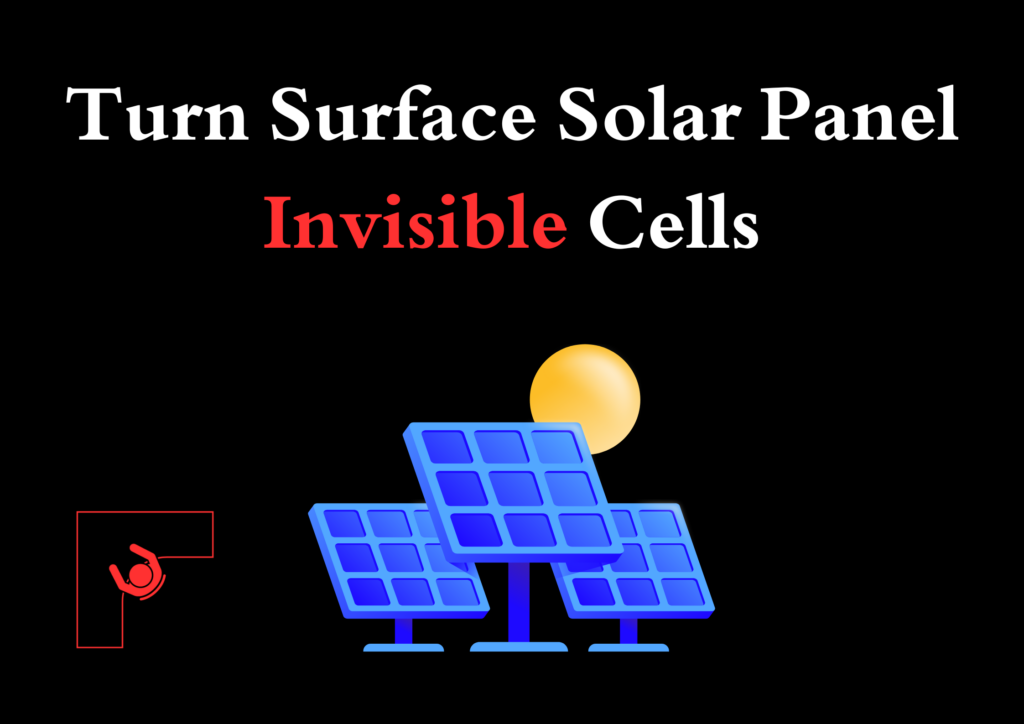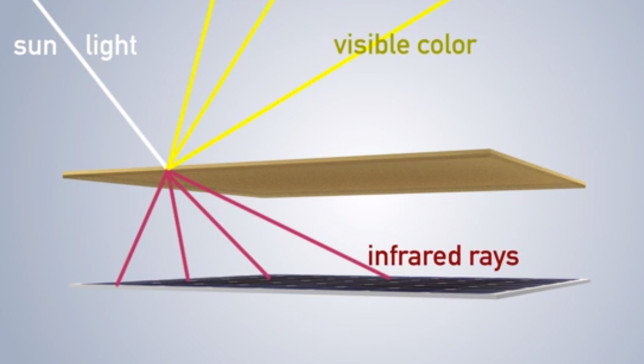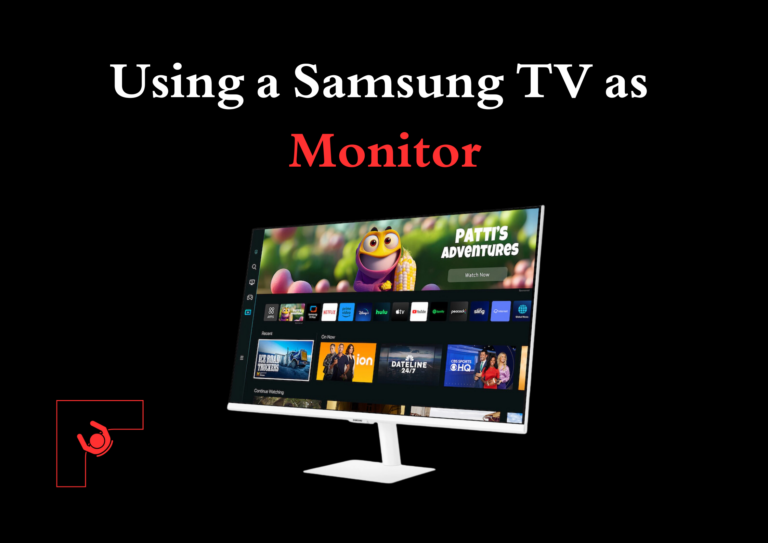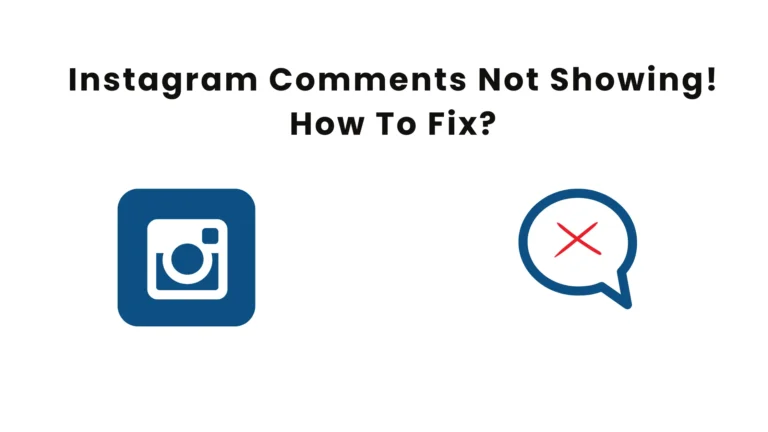Turn Surface Solar Panel Invisible Cells | What They Are and How To Do It?
As solar technology advances, innovations are making it possible to integrate solar panels into everyday environments seamlessly. One groundbreaking innovation is the development of invisible solar cells that can be installed on surfaces without altering their appearance.

These invisible cells are revolutionizing the way we think about renewable energy by combining aesthetics with functionality. Today, we will explain how to turn surface solar panel invisible cells, what these invisible solar panels are, and other key aspects related to their implementation.
What Are Invisible Solar Cells?
Invisible solar cells are advanced photovoltaic systems designed to blend into the surfaces they’re installed on. Unlike traditional solar panels that are bulky and visible, these panels are integrated into materials like glass, windows, walls, or rooftops, making them nearly invisible to the naked eye.
The technology is especially useful for urban environments, architectural projects, and areas where maintaining visual appeal is a priority.
These panels can be embedded into:
- Glass windows in buildings and vehicles.
- Rooftops with patterned or tiled surfaces.
- Screens and electronic devices.
- Urban furniture, such as benches or bus stops.
How Do Invisible Solar Cells Work?
Invisible solar cells use advanced materials and techniques to harvest solar energy while maintaining transparency or blending seamlessly into surfaces. Here’s how they function:
- Transparent Conductive Materials: These cells use materials like indium tin oxide (ITO) or other transparent conductive layers to collect sunlight while allowing light to pass through.
- Selective Absorption: The cells are designed to absorb only certain wavelengths of light (mainly ultraviolet and infrared) that are invisible to the human eye. Visible light passes through, maintaining transparency or the original look of the surface.
- Nanotechnology: Tiny, invisible photovoltaic structures are embedded into surfaces. These nanostructures capture light and convert it into electricity efficiently.
- Integration with Surfaces: The solar cells are either laminated into glass or other materials or printed directly using advanced manufacturing techniques.

Advantages of Invisible Solar Panels
1. Aesthetic Appeal
Invisible solar cells eliminate the need for visible panels, preserving the visual integrity of buildings, vehicles, or products.
2. Versatile Applications
These cells can be used in various applications, from skyscraper windows to smartphones, offering a vast scope for renewable energy integration.
3. Space Efficiency
They use surfaces that otherwise remain untapped for energy production, such as windows or decorative walls.
4. Eco-Friendly Solutions
By embedding solar technology into everyday surfaces, invisible cells help reduce dependency on non-renewable energy sources.
Challenges and Limitations
- Cost: The manufacturing process and materials used in invisible solar cells are more expensive than traditional panels.
- Efficiency: While technology is improving, invisible solar cells typically have lower energy conversion rates compared to conventional panels.
- Durability: Ensuring long-term performance under varying weather and environmental conditions remains a challenge.
How to Install Invisible Solar Cells?
The installation of invisible solar cells varies depending on the surface or application. Below are general steps:
- Identify the Surface: Choose the surface where the solar cells will be applied. This could be a window, rooftop, or other structure.
- Select the Type: Choose between pre-manufactured materials with embedded solar cells or those that require on-site printing.
- Prepare the Surface: Ensure the surface is clean and free of obstructions for effective energy harvesting.
- Professional Installation: Work with experts to install and connect the cells to the power system, ensuring optimal placement for maximum sunlight exposure.
- Integration with Energy Systems: Connect the cells to inverters or batteries for energy storage or direct use.

The Future of Invisible Solar Cells
As technology evolves, invisible solar cells are poised to become a significant part of the renewable energy landscape. Researchers focus on improving efficiency, reducing costs, and expanding their applications. These advancements could make renewable energy more accessible and appealing to a broader audience.
Frequently Asked Questions
Are invisible solar cells as efficient as traditional solar panels?
While they are improving, invisible solar cells generally have slightly lower efficiency compared to conventional panels due to their transparency and design constraints.
Can they be used on existing windows or surfaces?
Yes, they can often be retrofitted onto existing surfaces, though the process might require professional expertise.
Are these panels weather-resistant?
Most invisible solar panels are designed to be durable and weather-resistant, especially when used in outdoor applications.
Do they work indoors?
Some versions are designed to harvest energy from artificial light sources, but their efficiency is significantly higher under direct sunlight.
What is the lifespan of invisible solar cells?
Their lifespan depends on the materials used, but most are expected to last 20-25 years, similar to traditional panels.
Final Thoughts
Invisible solar cells represent a promising leap forward in solar technology. By seamlessly integrating into surfaces, they allow energy harvesting without compromising aesthetics.
While challenges are to be overcome, their potential to transform renewable energy adoption is undeniable. If you’re considering incorporating invisible solar panels, consult experts to explore options that best fit your needs and environment.
More Posts:
How to Download GIFs from Twitter X? 5 Easy Ways
Messenger “Not Everyone Can Message This Account” Error Explained






